Terrestrial LiDAR Helps Launch a New Era of Tech-infused Golf

Tomorrow's Golf League (TGL) began preparing for the launch of its inaugural event at the SoFi Center in Palm Beach Gardens, Florida, but they needed more than a cutting-edge facility; they needed precision. The league is introducing the fusion of physical and digital golf, and accuracy of the new tech is essential to protect game integrity and playability. For this service, TGL turned to AeroVision, a known leader in sport facility terrestrial LiDAR scanning and digital twin services, to create an accurate, scalable model of their new cutting-edge indoor golf greens.
Creating a Digital Twin Under a Tight Deadline
TGL faced a significant challenge: during Season 1 they needed to capture LiDAR scans of 31 variations of the greens to verify that their new technology was functioning properly. The LiDAR scans had to be completed within five days to accommodate the rapidly approaching debut of a new golf league. While scan density was not the primary focus to encourage a quick turnaround time, full coverage of the tee boxes and fully articulating and rotating green was critical, with no unscanned areas permitted in the final dataset, and a target of just a few millimeters for accuracy Digital gameplay had to match the real-world game play.
Complicating the process were construction constraints, which introduced additional hurdles to the already demanding timeline. Five days before the debut match, AeroVision was brought in to complete a terrestrial LiDAR survey. AeroVision took on the challenge of making sure that every slope, undulation, and surface detail of all 31 variations was accurately recorded, processed, and sent for review to support professional golf gameplay.
Here’s how AeroVision did it.
Executing the LiDAR Survey
With industry-leading LiDAR technology, the team carried out 18 LiDAR scans of each variation of the green, resulting in ~560 scans. To keep the process efficient without compromising detail, AeroVision used a non-colorized, medium point density in the scans. Medium point density is enough data to achieve the level of accuracy TGL required while avoiding any unnecessary data. This choice of point density was to prioritize accuracy as well as speed, given the tight deadline.
With an average time of 2-3 minutes per scan, AeroVision successfully completed the LiDAR scanning process over 2 night shifts.
A Digital Twin with Sub-Centimeter Accuracy
After completing ~560 scans of the greens, AeroVision’s team turned its focus to processing all of the scanned data, which produced 150GB of raw data. AeroVision used reference spheres placed strategically throughout the SoFi Center space that act as anchors on the scans. This allows the data to be linked together quickly during processing. They were able to transform the scans into fully realized digital copies of the SoFi Center’s greens within days. All 31 variations of elevation, slope, and undulation changes were captured with remarkable detail and precision, as expected, with no missed areas. Using the reference spheres, the final result was digital copies of the greens that achieved our target accuracy at ~5-6mm. This level of precision was a critical requirement for TGL as the greens needed to perform as modeled in the simulation environment.
The digital twins of the greens were able to be delivered ahead of schedule. Now TGL’s engineering team had ample time to conduct a thorough validation and quality assurance check of the greens variations. Any mismatch of the greens detected with the LiDAR data scans would have led to the discovery of issues with the gameplay accuracy. Fortunately, all scans confirmed that the surfaces were perfectly aligned and in the correct positions.
With the validation process complete, TGL (and the players) could move forward to their event with confidence in knowing that its greens were functioning as expected for a competitive gameplay event. By providing a reliable digital twin, AeroVision supported the delivery of a cutting-edge golf league experience, demonstrating the value of LiDAR mapping technology in the future of digital sports innovation.
AeroVision Delivers Confidence for TGL’s Inaugural Event
TGL hosted its first-ever league event at the SoFi Center on January 7, 2025. The debut of the league marked a new evolution in professional golf in front of a live and very excited audience of fans. Any discrepancy between the physical and digital course would have jeopardized the integrity of the event. Instead, TGL turned to AeroVision to efficiently eliminate that risk.
By delivering a flawlessly mapped terrestrial LiDAR scan ahead of a tight schedule, AeroVision met and exceeded TGL’s needs while helping to solidify the league’s credibility from day one of their opening event.
AeroVision LiDAR Scanning Key Takeaways
Efficient Execution: AeroVision completed close to 560 scans in two days. High scan density and color imaging were strategically omitted to stay within TGL’s tight schedule. Construction delays and technical issues posed challenges, but the project was able to remain on track.
Precision Scanning: Each variation was recorded and processed with sub-centimeter accuracy, measuring approximately 6mm. High levels of accuracy guaranteed reliable data collection for TGL’s use.
Reliable Results: AeroVision delivered the scans ahead of schedule, the validated dataset gave TGL the opportunity to confirm the greens’ accuracy well before the event.
AeroVision delivered high-quality LiDAR mapping results that exceeded expectations. Their contributions enabled a smooth launch for TGL. AeroVision also demonstrated how LiDAR mapping can support the intersection of sports and digital innovation through data verification.



